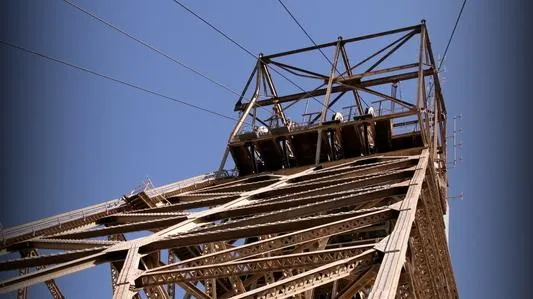South Africa’s platinum heritage: A story of triumph and tragedy

By the 1960s, South Africa had emerged as the world’s leading platinum producer, a status it maintains today.
Image: Nicola Mawson | IOL
South Africa’s platinum heritage runs deep, both beneath the Bushveld Complex and through the lives of generations of miners in towns such as Rustenburg, Marikana, and Mokopane.
Discovered in the 1920s, platinum quickly became a cornerstone of the country’s economy.
By the 1960s, South Africa had emerged as the world’s leading producer, a status it maintains today, driving industrial growth, exports, and the development of entire communities around the mines.
The early years of platinum mining were marked by small-scale operations, often linked to gold mining ventures, but the rich deposits of the Bushveld Complex soon attracted larger companies.
Mines grew rapidly, and so did the towns that supported them. Families settled near shafts and processing plants, creating communities whose lives would revolve around the metal beneath their feet.
Platinum became a source of pride and aspiration, a tangible symbol of South Africa’s place on the global mining map.
Alongside this opportunity came hardship.
Mine workers have faced long hours, dangerous working conditions, and systemic inequities.
For decades, the promise of steady work and income came with risks: underground accidents, exposure to harmful dust and chemicals, and a struggle for fair wages and recognition.
These challenges were magnified by the inequalities that marked South Africa’s industrial landscape.
Generations of families bore the weight of this labour, shaping towns and lives while advocating for dignity and fairness.
The Marikana massacre of 2012 remains the most tragic and poignant chapter in this human story.
At the Lonmin platinum mine, police shot and killed 34 striking miners demanding higher wages and better working conditions.
The event sent shockwaves across the country and the world, laying bare the tensions, inequities, and human costs inherent in South Africa’s mining sector.
It was a stark reminder that the wealth beneath the ground came at a human price, and that platinum’s story cannot be told without acknowledging the suffering and sacrifice of those who extract it.
Beyond the mines, platinum has become a symbol of innovation and industrial might. It powers automotive catalytic converters, fuels green technologies such as hydrogen fuel cells, and finds its way into jewellery, the names of awards, and ceremonial objects.
South Africa’s industrial identity is intertwined with the metal, which continues to play a pivotal role in global supply chains and technological development.
The metal’s reach extends far beyond the borders of Rustenburg or Marikana, touching lives and economies worldwide.
Yet the true legacy of South Africa’s platinum lies in people. It is in the resilience of workers who descend into shafts each day, in the families who support them, and in the communities that have grown around mining towns over decades.
It is in the sacrifices made, the strikes fought, and the calls for fair treatment that have shaped both labour law and social consciousness in the country.
Platinum is not just a commodity; it is a lens through which one can view the complexities of South Africa’s social, economic, and industrial history.
The heritage of platinum is mixed. It is a story of triumph and tragedy, of opportunity and hardship, of global significance and intimate human experience.
Towns like Rustenburg and Mokopane are living testaments to this duality, reflecting both the promise that platinum has offered and the struggles it has imposed.
As the world increasingly looks toward sustainable and green technologies, platinum’s role in South Africa’s future may be as significant as its past.
The metal underpins innovations in clean energy and continues to be an economic driver. Yet any discussion of its promise must reckon with its past.
From the first prospectors in the 1920s to modern mining operations today, platinum has shaped a nation’s economy, industry, and identity. And in towns like Marikana, where tragedy and resilience meet, the metal’s legacy is most human.
South Africa’s platinum heritage is a story of contrasts – glimmering wealth and deep struggle, industrial achievement and human cost – but above all, it is a story of the people who have lived, worked, and endured alongside it.
IOL